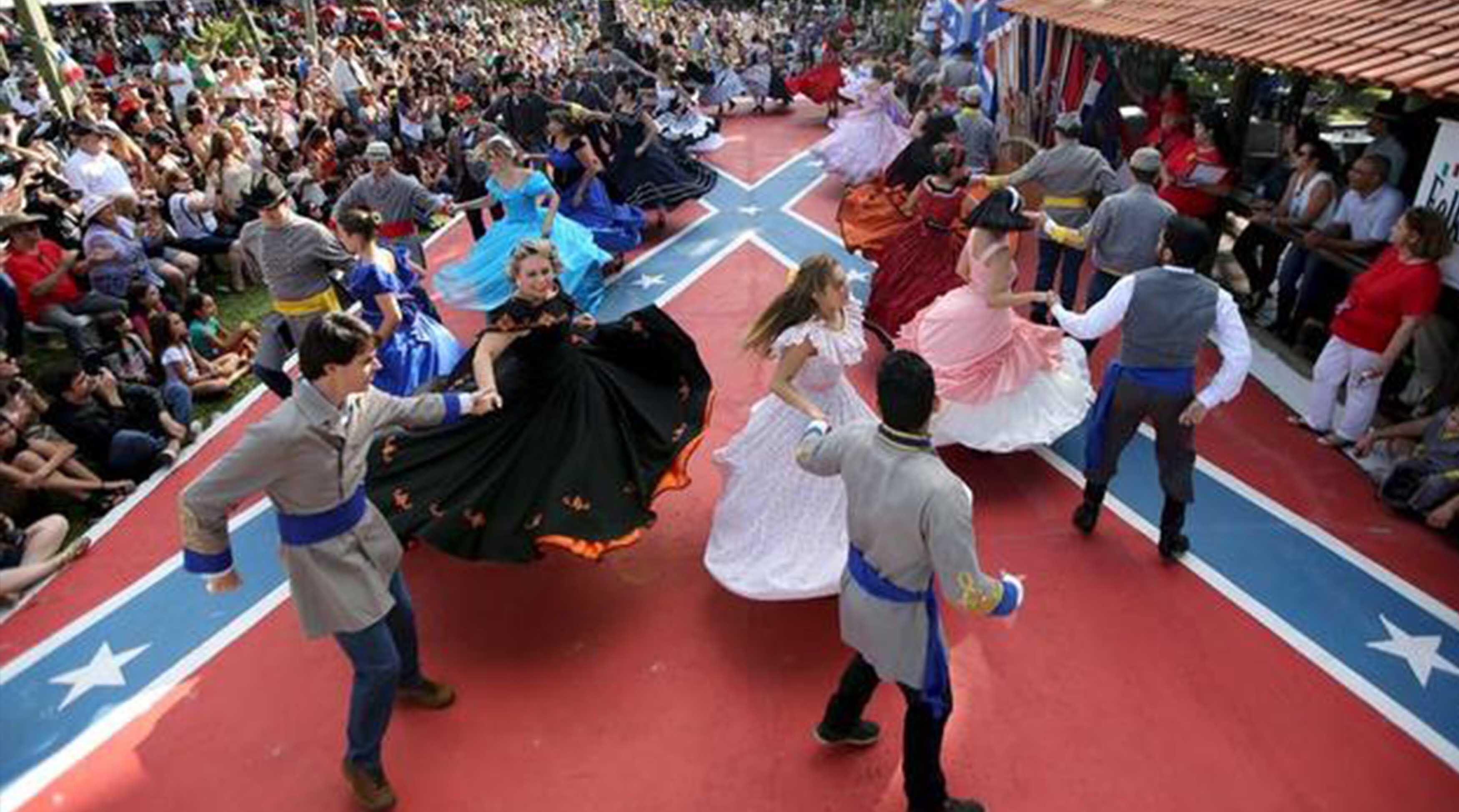The Confederados: The Confederate Flag Flies in Brazil – Rewind
Originally released Jan 3, 2022. In 1808, a lover’s quarrel in Paris led to one of the most interesting duels ever fought. Monsieur LePique and Monsieur de Grandpré both fell in love with the same ballerina. So they did what anyone caught in a 19th century Parisian love triangle would do: they fought a duel via hot air balloon. In this episode, we tell the extremely French tale and then issue a quick quiz about duels to Professional Mindreader, Eric Dittelman!

You may or may not know that I’m a history buff and in particular, I’m fascinated with the American Civil War. So this is one of those stories that I did know a little bit about, but not a ton – so I was happy to spend the week learning about it. It’s super interesting. We see immigrants at our borders on the news every day. For those who live in border states, you may see them as a part of your daily life. They’re people who are fleeing their country in the hopes that this new country provides a better life. Well this story about a different type of immigration. A time when immigrants left the US.
Something you hear a lot when it comes to patriotism or politics is “Love it or leave it” – this idea that if you have a complaint about this country or its government that you should just leave. This story is about a group of people who took that seriously.
In 1865 the American Civil War came to an end. Between the months of April and June, most of the Confederate soldiers surrendered. It had been 4 years of bloody battles and around 750,000 dead – 2 and a half percent of the total US population.
Lincoln had a plan for reconstruction that was a threat to what many considered the southern way of living. Freed slaves would have joined the working class – they would have been given their own land – and amnesty would be given to those Confederate Soldiers who took up arms against the United States. Lincoln wanted a swift reunification and so his plan was based on forgiveness. But as we know, Lincoln was assassinated soon after the end of the war. And while his successor Andrew Johnson wouldn’t carry out Lincoln’s vision for reconstruction, many Confederate soldiers worried about living in a country that didn’t hold their values. Others had lost their land.
Starting just before the Civil War, America was experiencing westward expansion. The building of the intercontinental railroad and the homestead act had people flocking west. In fact, the argument as to whether these new territories would be slave states or free states was one of the significant factors to the start of the war. After the war, a lot of confederate soldiers moved out of the south. They went West, seeking out fortune and a new life.
For some of the Leaders of the Confederate Army, amnesty wasn’t initially extended to them. Jefferson Davis spent two years in a Virginia prison. When he was released, he fled to Canada, then England. His Vice President Alexander Stephens was held in a Boston prison until October when President Johnson released him. He wouldn’t flee the country at all and instead went on to be a U.S. Congressman and the Governor of Georgia.
Robert E. Lee fought against black voting rights after the war and ended up poor and homeless before being made the head of Washington College.
General George Pickett fled to Canada for 2 years until he was pardoned.
But for some of the soldiers who still deeply held their confederate pro-slavery values, they sought out to create new confederate colonies outside of the U.S. One plan was for a place called the “New Virginia Colony.” The main settlement was planned in Carlota – halfway between Mexico City and Veracruz but there was as many as 4 other colonies planned throughout Mexico. There were a few problems – Mexico wouldn’t allow them to bring slaves and eventually the confederate-friendly emperor of Mexico was overrun with Mexican Republicans who didn’t approve of the confederate settlers.
Other confederate colonies were attempted in Belize, Paraguay, and Cuba. But the most widespread and successful attempt at a new confederate colony occurred in the Brazilian state of São Paulo.
There’s a small cemetery south of Santa Barbara D’Oeste in Brazil. It’s called Cemtério dos Americanos. And there are several generations of American Immigrants buried there – almost 500 interments in total. Every year in April, there’s an unapologetic festival at the cemetery celebrating all things confederate – the festa confederada Members of the community meet to eat foods from the American South – fried chicken and French fries, listen to country music, dress up in confederate uniforms and antebellum dresses. And they dance. The dance floor – a permanent outdoor surface, depicts a giant confederate flag. It’s a celebration of Brazil’s interpretation of the Confederacy – stewarded by Brazilians who are the descendants of confederate immigrants who moved there from America more than 150 years ago. I went to their instagram page and it’s absolutely bizarre. You’ll find a combination of confederate flags, american bikers, women in ornate civil war era dress, men in costume, trump flags, and quasi-american patriotism. Pictures of the festival include other icons of a Conservative anti-government America, like the Gadsden “don’t tread on me” flag. One memorial day post says “In honor of the fallen” with a pair of oak leaves, but inside the oak leaves is the confederate flag. Why here? Why in the middle of Brazil?
In 1865, slavery was still legal in Brazil. In fact, it was the last of the western countries to outlaw slavery in 1888. Brazil relied on African enslaved people all the way back to the 16th century when the country developed a lucrative mining industry. Around 40% of the 11 million Africans that were forced into slavery in the Atlantic sale trade were brought to Brazil to work on Sugarcane plantations. In addition to sugar cane, Dom Pedro the second, Brazil’s Emperor, wanted to develop a lucrative cotton industry in Brazil. He offered southern farmers cheap land, tax breaks and free travel to his country in order to cultivate this new industry. While some Confederate leaders discouraged southerners from emigrating to Brazil, thousands did anyway.
No one is sure exactly how many confederates fled to São Paulo. Conservative estimates put the number at around 8,000 but port records of Rio de Janiero show that as many as 20,000 Americans entered Brazil after the war. These were people who no longer identified with an America that didn’t value a slave-holding agricultural South. They were people who didn’t want to feel conquered and saw the South without slavery as a south that would live in poverty. So they took Dom Pedro the second up on his offer and fled by the thousands. Many fled to Santa Barbara d’Oeste, a city northwest of Campinas. Others founded the city of Americana to the East. And it was there that these Americans put down roots. Some returned the U.S. once reconstruction failed and the Jim Crow era began. But most stayed.
So for now – their legacy continues. And just like the “Lost Cause” narrative replaced the truth here in the states, the same is true for the proxy confederacy that still exists 3,000 miles from where the Civil War ended. Today, the history and legacy of the confederados that left the U.S. is held by a group called the Fraternity of the American Descendants. Marcelo Dodson is a past-president of the group and in the 2017 aftermath of the white-nationalist rally in Charlottesville, VA he made the argument that the Civil War was a battle not for slavery, but for small government, free commerce and states’ rights. This of course is a view of the conflict with which most historians disagree. In an era where more and more Americans disagree with the flying of the Confederate flag in the U.S., it still flies – proudly and strangely in one small part of Brazil.

Bonus episodes and content available at http://Patreon.com/MichaelKent
Review this podcast at https://podcasts.apple.com/us/podcast/the-internet-says-it-s-true/id1530853589
For special discounts and links to our sponsors, visit http://theinternetsaysitstrue.com/deals

